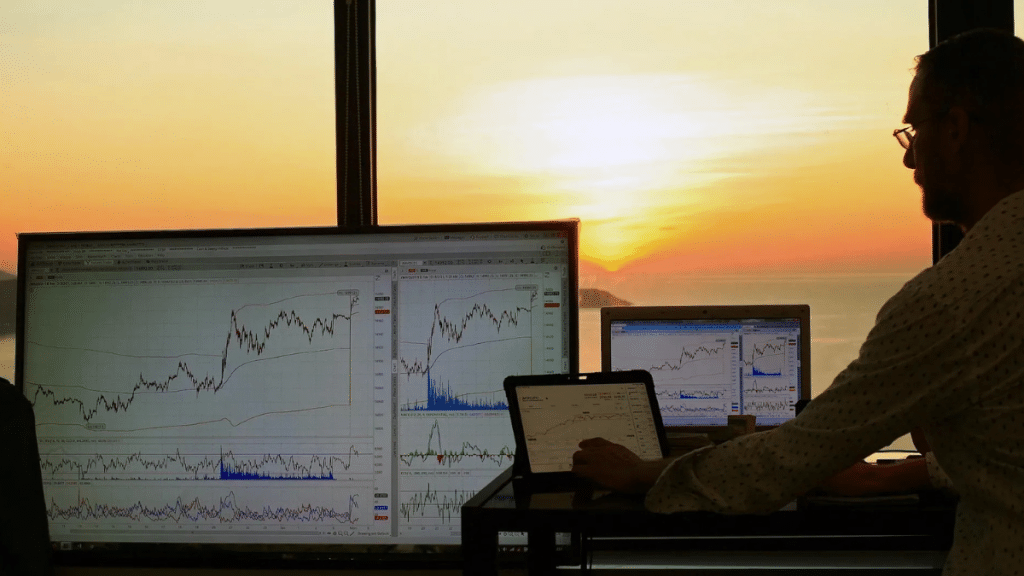School gives us the basics: reading, math, maybe a crash course in economics; but it rarely explains the deeper patterns that shape our financial world. One figure who has been vocal about these overlooked lessons is Al Sollami. His perspective goes beyond textbooks, shining light on the recurring rhythms of market cycles and the decisions that can make or break financial futures.
The Market as a Living Organism
Market cycles aren’t just abstract graphs or technical terms. They’re the heartbeat of the economy. Like tides, they ebb and flow in predictable yet often misunderstood ways. Peaks and troughs are not random; they stem from a combination of investor psychology, economic data, and global events.
Unfortunately, most formal education focuses on static concepts, such as supply and demand curves, interest rates, and GDP, without connecting these dots to real-world market phases. That missing link leaves many investors blind to how cycles influence everything from stock valuations to job markets.
Why Cycles Matter More Than You Think
Understanding market cycles is like knowing the weather forecast before planning a trip. If you know a storm is likely, you prepare differently. In investing, awareness of cycles can help you avoid costly mistakes such as buying during inflated highs or selling during unnecessary panic.
Cycles also reveal broader economic health. Bull markets can mask deeper structural issues, while recessions often expose them. Those who grasp these rhythms can anticipate opportunities when others see only risk.
The Human Factor: Psychology Drives Markets
One truth rarely emphasized in school is that markets are powered as much by emotion as by logic. Greed pushes prices higher than fundamentals justify, while fear can drag them lower than reality warrants. This emotional pendulum fuels the very cycles that repeat across decades.
Smart investors, as Alfred Sollami once noted in a financial seminar, recognize that while data is essential, human behavior often tips the scales. By studying sentiment indicators and news cycles alongside fundamentals, investors gain a clearer picture of what’s truly driving market moves.
Phases of a Market Cycle: Beyond the Basics
Market cycles generally follow four key stages:
- Accumulation Phase – Savvy investors quietly buy when sentiment is low and valuations are attractive.
- Mark-Up Phase – Optimism grows, prices climb steadily, and media coverage turns positive.
- Distribution Phase – Institutions and seasoned players begin selling to latecomers, even as headlines remain upbeat.
- Mark-Down Phase – Prices fall, panic sets in, and the cycle prepares to reset.
This simplified model hides the complexity within each stage, but the pattern is consistent. The problem? Many investors only notice the mark-up stage, when it feels safest, and miss the best opportunities found earlier in the cycle.
The Education Gap: Why Schools Skip This Lesson
Why don’t schools cover market cycles in depth? Part of the reason lies in curriculum priorities. Economics courses often prioritize broad theory over actionable, real-world skills. Additionally, cycles require context; decades of data and historical analysis, which can’t be condensed into a few classroom hours.
The result is a financial literacy gap. Students may leave school knowing how to calculate compound interest but remain unaware of how macroeconomic forces and investor psychology intertwine to create long-term patterns.
Historical Lessons Hidden in Plain Sight
Look at past market histories: the dot-com bubble, the 2008 financial crisis, and the post-pandemic bull run. Each followed the classic pattern of optimism, overextension, correction, and recovery. Yet despite these clear repetitions, the public often treats each cycle as unprecedented.
Al Sollami’s work emphasizes that the patterns themselves are the constants; only the catalysts change. In the dot-com bubble, it was speculative internet companies. In 2008, subprime mortgages. In the post-pandemic surge, stimulus-driven liquidity and tech valuations have been significant factors. The scenery changes, but the rhythm remains.
Tools for Recognizing Where We Are in the Cycle
Spotting a cycle’s phase in real time is challenging but not impossible. Some key indicators include:
- Economic Data Trends – Employment rates, inflation, and interest rate changes signal turning points.
- Valuation Metrics – Price-to-earnings ratios and market breadth show whether markets are stretched or undervalued.
- Sentiment Surveys – Gauging optimism or fear among investors can reveal when the crowd is leaning too far in one direction.
Blending these metrics with historical knowledge helps investors avoid emotional decision-making. Reliable data sources like Federal Reserve Economic Data and Investopedia are invaluable for this.
Patience and Timing Over Constant Activity
Another overlooked truth: successful market cycle investing often means doing less. Buying aggressively at cycle lows and holding through the noise can outperform frequent trading. Yet schools and media tend to glorify constant action, feeding into a short-term mindset.
Patience requires discipline, resisting the urge to chase rising prices or dump holdings during downturns. Those who understand cycles know that time in the market often beats timing the market, especially when guided by a cycle-based strategy.
From Knowledge to Strategy
Recognizing cycles isn’t just about prediction; it’s about preparation. Here’s how investors can use this insight:
- Allocate Assets Wisely – Adjust exposure to stocks, bonds, or alternative investments based on the cycle stage.
- Build a Watchlist – Identify undervalued opportunities before the market turns.
- Diversify with Purpose – Spread risk to weather downturns without abandoning growth potential.
Following these steps transforms market awareness into tangible action, bridging the gap between theory and practice.
Conclusion
The market’s cyclical nature isn’t a hidden secret; it’s an open pattern repeated through history. The real secret lies in recognizing it early, preparing accordingly, and resisting the emotional pull that catches most investors off guard. Figures like Al Sollami have long argued that these lessons should be part of every student’s education. Until they are, those willing to learn now will always have an edge when the next cycle begins.

